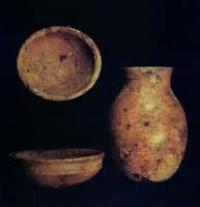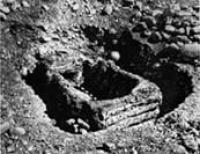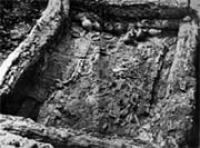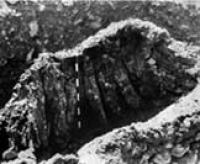You are here
Sak Burial Mounds (Kazakh Golden Man).




Visit to Issyk Burial Mound.
«Memory is the treasure house of the mind wherein the monuments thereof are kept and preserved»
Thomas Fuller.
Archaeological tours on ancient burial mounds of Kazakhstan.
The Issyk burial mound is аrchaeological discovery from the Scythian-Sacae period, indeed as one of the greatest finds of the XXth century. The burial mound dates back to the IVth century ВС. In 1969 -1970 а vault 60 metres in diameter and 6 metres high was discovered under the mound, with two burial chambers.
The central chamber had been repeatedly plundered in ancient times, but the side-chamber, 15. metres south of the central one, was untouched. The young man who lay buried there was а Sacae ruler; Kazakhstani archaeologists believe he was а representative of the ruling Great Kushan Empire.
The Golden Warrior was dressed in an arrow-shaped headdress and chain-mail armour richly decorated with platelets. His belt and weapons were of pure gold. There are famous Sak burial mounds in this ravine.
On the outskirts of Yesik town, the Sak burial mound was found and it is known in the whole world. Under it, in the grave covered with spruce logs, on the wooden floor there were the remains of a sak warrior in the clothes completely covered with golden plates (Golden Man).
On his head there was a pointed hat decorated with the pictures of flying horses symbolizing the God of Sun. Long sword and short dagger were the weapons. Near the warrior in the grave there were clay vessels with horse milk, wooden trays with meat loaves, precious silver and bronze vessels.
The burial mound is located at the southern outskirts of the large cemetery, which consisted of more than 40 burial mounds. The diameter of the burial mound is 60 m, and the height is 6 m. The mound is multi-layered (3 - 4 layers), the layer of pebbles is interchanging with the clay-gravel layer.
Under the mound there are two graves: central and side (southern). The central grave was completely robbed and the side grave was not disturbed. The grave was constructed from the Tien-Shan spruce logs. The size of the grave is: in the internal side 2.9 х 1.5 m, on the external side – 3.3 х 1.9 m, and the height with the slopes is 1.3 - 1.5 m.
According to the anthropologists, the warrior buried in Issyk mound was 17-18 years old. He had expensive gold-embroidered clothes. In total he had around 150 jewels. Most of them have stamped pictures of snow leopards, tau-teke, argali, horses, birds.
The warrior’s garment included caftan and pants. The short leather caftan of the red colour is sewed with golden plaques, and coat-breast, lower part and collar are sewed with large plaques with the pictures of tiger heads.
The caftan has around three thousand golden things. At the southern wall there was wooden crockery. On the background there were four plates, and near but on the foreground there were bowls and a scoop. At the other wall there were clay jugs and in front of them there were bowls; amongst these bowls there were two silver bowls and one spoon.
One of the silver bowls had the inscription containing 26 letters (signs). The burial in Issyk mound is dated as of the end of IV centuries B.C. The costume consists of4,000 gold ornaments in the animal style typical craftsmen.
The young warrior's ornamented funeral armour is priceless. His dagger (akinak) is а masterpiece "animal" style, with 21 beasts worked on both gold-plated sides of the dagger. Replicas " Golden Man are on display at museums in Almaty and Astana.
Authority:
The guidebook across Kazakhstan. The edition of the ministry of tourism and sports.
Photos
Alexander Petrov.







